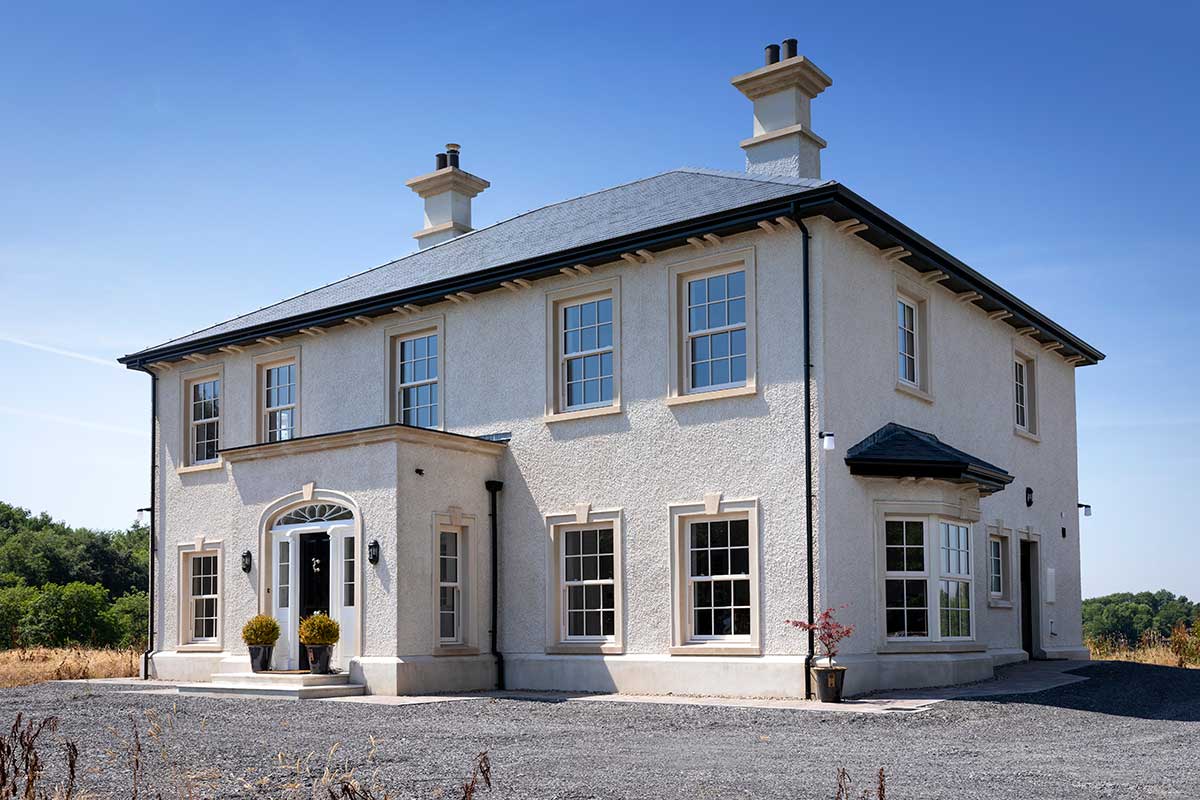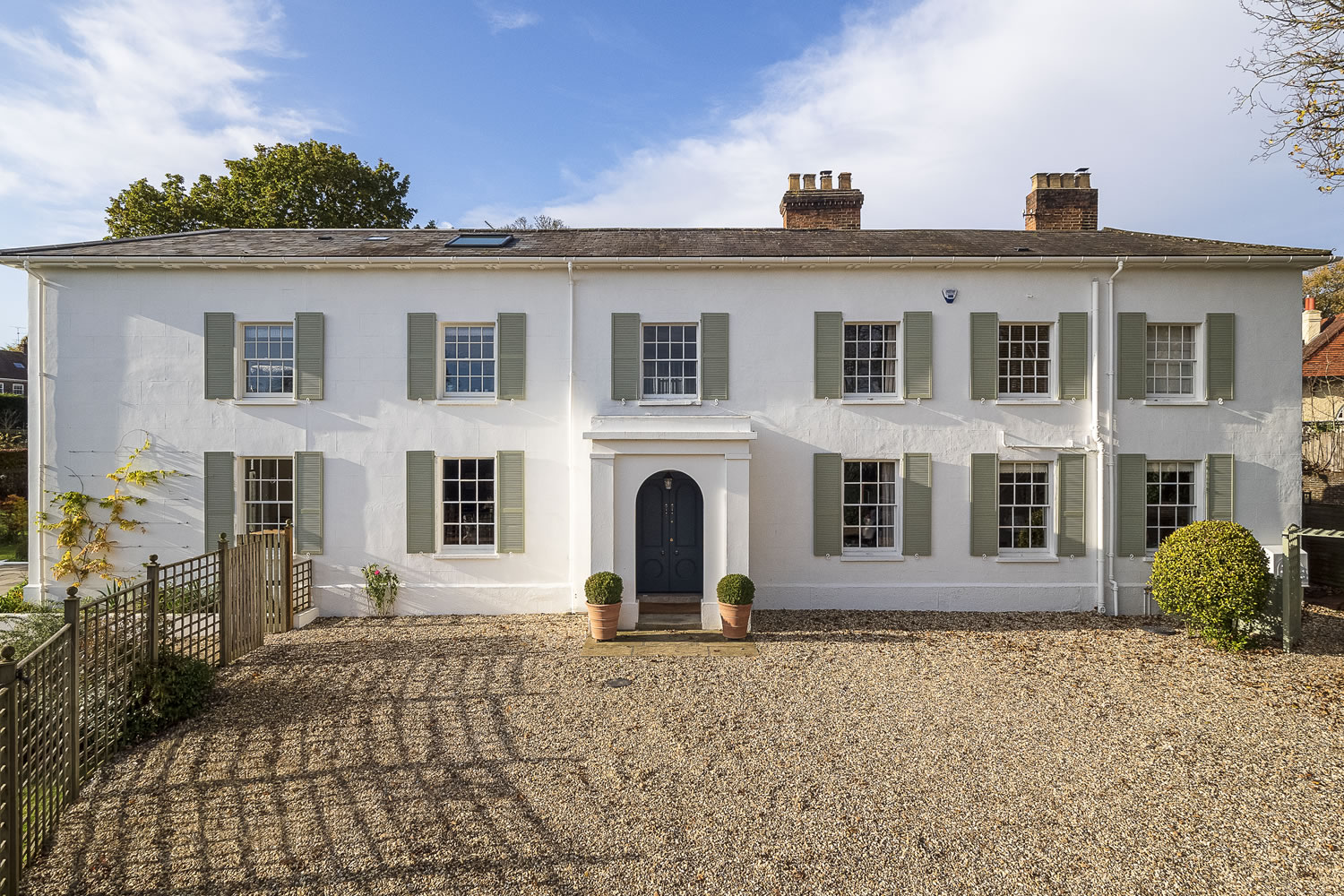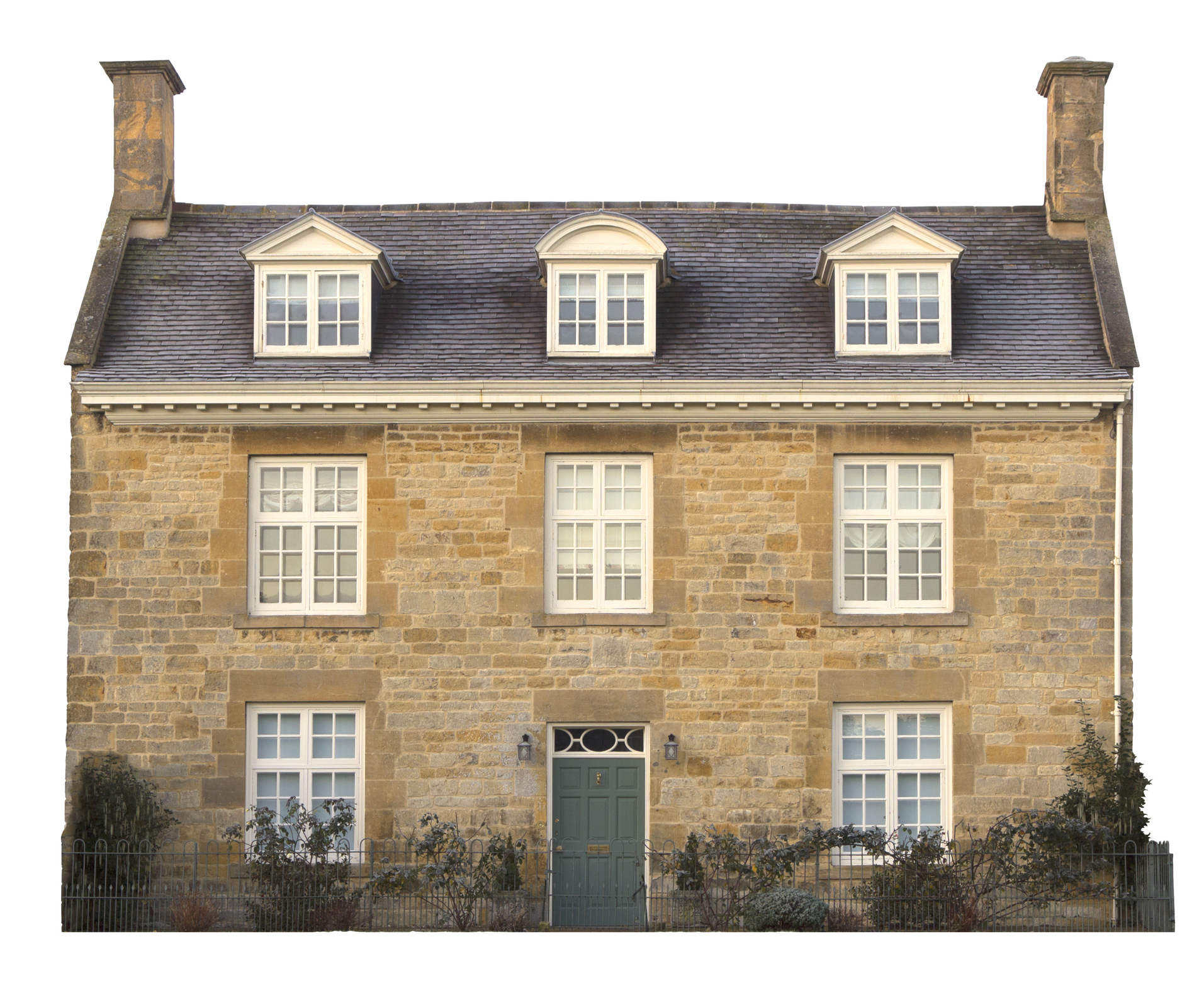Table Of Content

Another approach we implement is to keep the formal rooms in the home more traditional in look and detailing, then gradually transitioning the finishes to more modern ones as we move to the more functional spaces of the home such as the kitchen and bathrooms. This contemporary two and a half story living room in a Lakeside Georgian Estate features large windows and doors that open onto the rear terrace and overlook the lake beyond. Tall rift-sawn oak panels were designed to provide a warm and soft pallet to pair with metal accents that adorn the surfaces of this grand centralized room. Asphalt roofing in colors that mimic traditional roofing is a substantially less expensive alternative used widely today. Although the best new modern Georgian homes appear very similar on the outside to their historical counterparts, some of the exterior materials typically used to construct a modern Georgian house have significantly evolved through the years.
Designing a Georgian Style Home
Upon entering the building through the vast northern entrance on the piano nobile, one is met with a marble hallway meant to resemble the spacious court or arena of a Roman villa. The Moffatt-Ladd House, perched aloft on a hilltop above the Piscataqua River, overlooks the waterway that brought immense prosperity to Portsmouth. Timber was brought in from New Hampshire’s woodlands to feed the village’s active docks, while fishing vessels departed the port for the bountiful banks of the coastline. One of the most prosperous of Portsmouth’s mercantile aristocracy was John Moffatt, who amassed wealth in commerce and investment from the mid-to-late 18th century. Horace Walpole purchased the property, which was previously inhabited by a couple of unremarkable dwellings, in 1747. Horace was the son of Britain’s first Prime Minister Sir Robert Walpole, and had a political career of his own, albeit it was not as prosperous as his father’s.
wonderful Georgian homes
Historic Georgian homes were characterized by doors with a fanlight above and were set back not less than four inches from the brick face. Georgian Architecture refers to the preferred architectural designs completed from August 1714 to June 1830, during the reigns of George I, George II, George III, and George IV. Georgian buildings became prominent across Europe and were popular in public and private structures.

Georgian Architecture: Key Features and Design Ideas
If this sounds too academic for you, don't worry, this tour is aimed at the novice up. For example, Georgian homes and buildings often had rigid symmetry in building mass, in window and door placement and even in the layout of interior rooms. Kedleston Hall was designed by the architect Robert Adam and was commissioned by Nathaniel Curzon in 1759. The three-story home is composed of three blocks connected by two segmentally curving hallways.
Colonial Georgian architecture
These windows are designed using classical proportions, with the height of each window being precisely 1.6 times its width. Once you’ve walked through the entryway of a Georgian-style house, you’ll find yourself in a center hall with a staircase leading up to the second floor. On either side of the center hall will be the formal living and dining rooms, with the kitchen area in the rear.
What is the difference between Georgian and Colonial?
These include Charleston, S.C.; New Bern, N.C.; Annapolis, Maryland; Newport, R.I.; and Marblehead, Mass. And, of course, a later generation of Georgian-style houses are those built around the country, with varying degrees of authenticity, during the height of the Colonial Revival. During the later Georgian period, houses throughout the Colonies were more embellished. The doorway might be extended to form an entry portico; dormers and corner quoins became common; two-storey pilasters and pedimented center gables were introduced.
Georgia's house price growth continues to accelerate - Global Property Guide
Georgia's house price growth continues to accelerate.
Posted: Mon, 15 Apr 2024 07:00:00 GMT [source]
Brief Historic Overview
Driveways and walkways are traditionally paved with stone, brick, and/or gravel. More modern examples incorporate concrete and asphalt which can be surfaced with oil and stone or in some cases crushed seashells. The Colonial towns that became big cities after the Revolutionary War long ago lost much of their early architecture. Cities left behind during the booms of the 19th century today treasure their rare, remaining Georgian houses.
Hidden under the finished walls and ceiling of this living room in a Lakeside Georgian Estate is a warren of smart and energy efficient mechanicals, electricals, AV technology, along with a robust structure to hold the home’s green roof above. Most concrete block (CMU) homes have 2 x 4 or 2 x 6 exterior walls on the 2nd story. Justin van Huyssteen is a freelance writer, novelist, and academic originally from Cape Town, South Africa. At present, he has a bachelor’s degree in English and literary theory and an honor’s degree in literary theory. He is currently working towards his master’s degree in literary theory with a focus on animal studies, critical theory, and semiotics within literature.
Sash windows with internal shutters.

Classical design principles from Georgian times still guide architects as they create spaces that feel both grand and welcoming. This melding of historic charm and current trends creates spaces that honor architectural heritage while meeting the needs of present-day living. Strawberry Hill House stands as Britain's prime example of Georgian Gothic Revival architecture. Originally a modest structure from 1698, Horace Walpole, a renowned historian, writer, and son of Britain's first Prime Minister, transformed it into a Gothic fantasy between 1747 and 1792. This riverside villa, famous for its architecture and interior decoration, now houses a significant collection of art and objects. The house set a standard for English mansions and even inspired homes across the ocean on American plantations.
His main interests were the arts and antique acquisition, as well as literature. He was a brilliant communicator and consummate writer with his extensive letters providing an excellent, if strongly prejudiced, glimpse into Georgian politics and culture. The interior, in keeping with Palladian norms, is even more colorful, flamboyant, and luxurious than the exterior. Charles Bridgeman renovated the grounds surrounding Houghton Hall in the 18th century. The hamlet of Houghton was destroyed and reconstructed near the park’s entrance gate, with the exclusion of the ancient parish, which now stands alone on the estate.
In later revival examples, windows are ganged together more frequently and sometimes mixed with fixed picture units. In the mid-18th century, Palladianism evolved into Neoclassical architecture, which directly borrowed from the designs of ancient European empires. Aside from stately homes and manors, churches, government buildings, and other important public institutions were built in accordance with the Georgian ideals of proportion and symmetry. Typically incorporated as a stylistic embellishment, double-hung sash windows along with small panes or lights, usually 12 over 12 or 9 over 9, were the standard variations used in Georgian architecture.
She worked on Country Homes & Interiors for 15 years, before returning to Homes & Gardens as houses editor four years ago. Around 1876, the Georgian Revival re-surfaced, but it only hit the West Coast after World War I. And as time passed, the design became very popular in the US. People eventually started using the term “Georgian” to refer to “symmetrical” in architecture.
The building is amongst the finest examples of Georgian architecture, with perfect symmetry, white stone, and a beautiful pair of female caryatids inspired by the Erechtheion of ancient Athens. Soane ensured the preservation of his building for generations, and today, No 13, Lincolns Inn Fields is a museum that exudes everything classical Georgian simplicity offers. The early Georgian design had a distinct revival of Palladianism and historic Roman temple pillars and facades.
These roofs are sometimes concealed from view behind an ornamental parapet or wall, creating the illusion of a more symmetrical profile when viewed from street level. The style of houses built during this period reflects this trend and at the beginning of the century the ground and first floor windows were of the same size. Later on, when the first floor became the only party place, it became more common to see the highest ceilings and tallest windows on this floor only.
Georgia House sends bill to restrict union formation at state-subsidized firms heads to governor's desk • Georgia ... - Georgia Recorder
Georgia House sends bill to restrict union formation at state-subsidized firms heads to governor's desk • Georgia ....
Posted: Wed, 20 Mar 2024 07:00:00 GMT [source]
His book “I Quattro Libri Dell’architecture” (The Four Books on Architecture), first published in 1570, was the most successful architectural treatise of the Renaissance. There are great lessons for residential designers today, especially in the first book that focuses on building materials, techniques, and the five classical orders—and the second book that deals with private houses and villas, almost all of Palladio’s own design. Georgian-style homes have a footprint that is either square or rectangular in shape. Most Georgian houses in the United States have either side gabled roofs, or hipped roofs, which slope inwards and upwards from all four sides.
House of Correction in Littledean was a police station and a remand center since 1854. Today it is a museum referred to as a home to the infamous Crime Through Time collection.
No comments:
Post a Comment